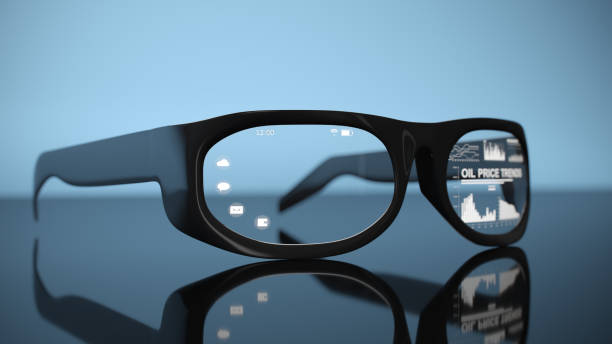"Augmented Reality Glasses: A New Vision for the Future"
Augmented Reality (AR) glasses are no longer the stuff of science fiction. They're here, transforming our world into an interactive digital playground. This article delves into the evolution, current trends, and future possibilities of AR glasses that promise to revolutionize our daily lives.

A Glimpse into the Past
The journey of AR glasses began in the 1960s with Ivan Sutherland’s head-mounted display system, the “Sword of Damocles.” Fast forward to the 21st century, and we saw Google’s ambitious but ultimately unsuccessful Google Glass. Despite its failure, it spurred the tech world’s imagination, leading to an influx of innovation in the AR glasses industry.
The Present Scenario
Today, various tech giants are vying for dominance in the AR glasses market. Apple is rumored to launch its AR glasses soon, while Facebook, in collaboration with Ray-Ban, has already launched its “Ray-Ban Stories” smart glasses. These glasses, however, offer limited AR features, focusing more on capturing photos and videos.
One notable product is Microsoft’s HoloLens 2. Unlike most AR glasses that overlay digital information on the real world, HoloLens 2 allows users to interact with holograms in their physical environment, thus blurring the line between the real and digital worlds.
The Future Holds the Key
As AR technology continues to advance, we can expect AR glasses to become more immersive, lightweight, and affordable. Experts predict that by 2025, the AR glasses market will reach a whopping $13.4 billion, indicating a promising future for this tech trend.
Pricing and Market Impact
Currently, AR glasses are a premium product with a hefty price tag. For example, HoloLens 2 costs around $3,500. However, as technology improves and competition intensifies, prices are expected to drop, making AR glasses more accessible to the general public.
The potential market impact of AR glasses is immense. They can revolutionize various sectors, including education, healthcare, entertainment, and retail. For instance, in education, AR glasses can provide immersive learning experiences, making education more engaging and effective.
The Verdict
AR glasses are poised to become the next big thing in the tech world. They hold the potential to transform how we interact with the digital world, making it more immersive and interactive. Despite the challenges, the future of AR glasses looks bright, promising a world where our reality is only limited by our imagination.
As we stand on the brink of this exciting new era, one can’t help but wonder: Are we ready to embrace the augmented reality revolution? Only time will tell.




